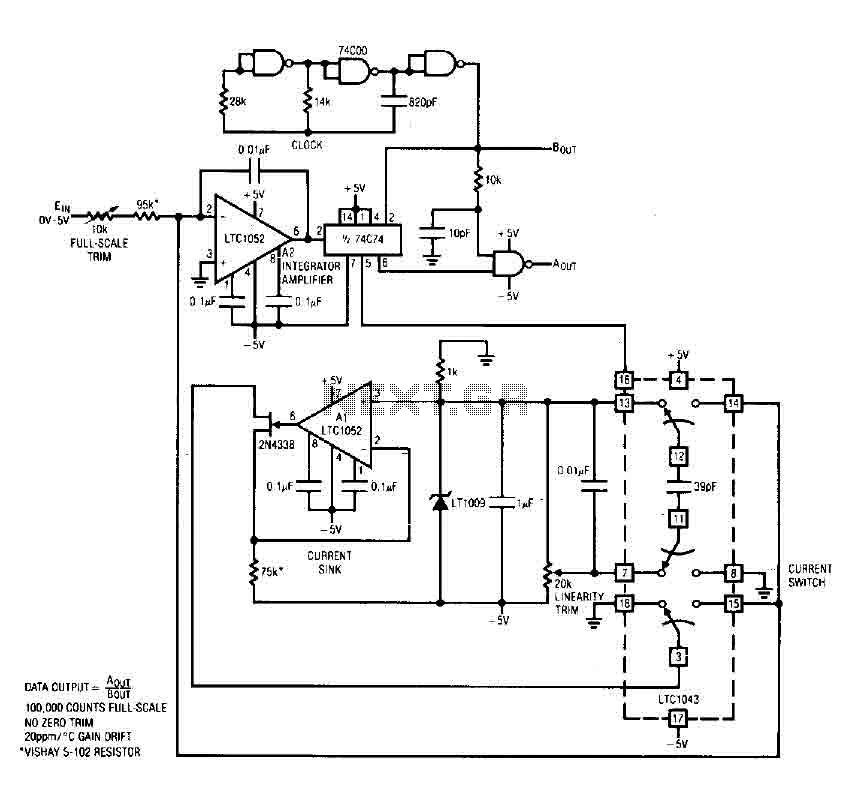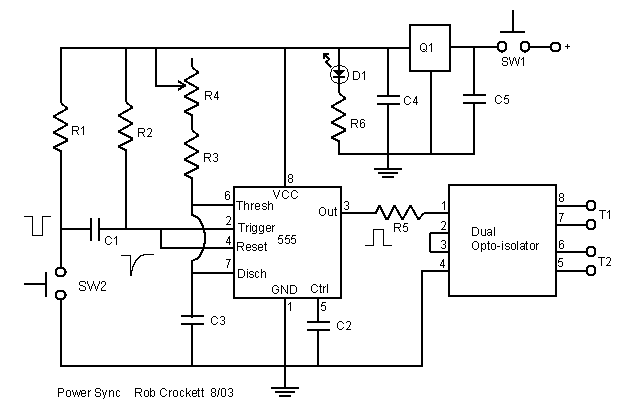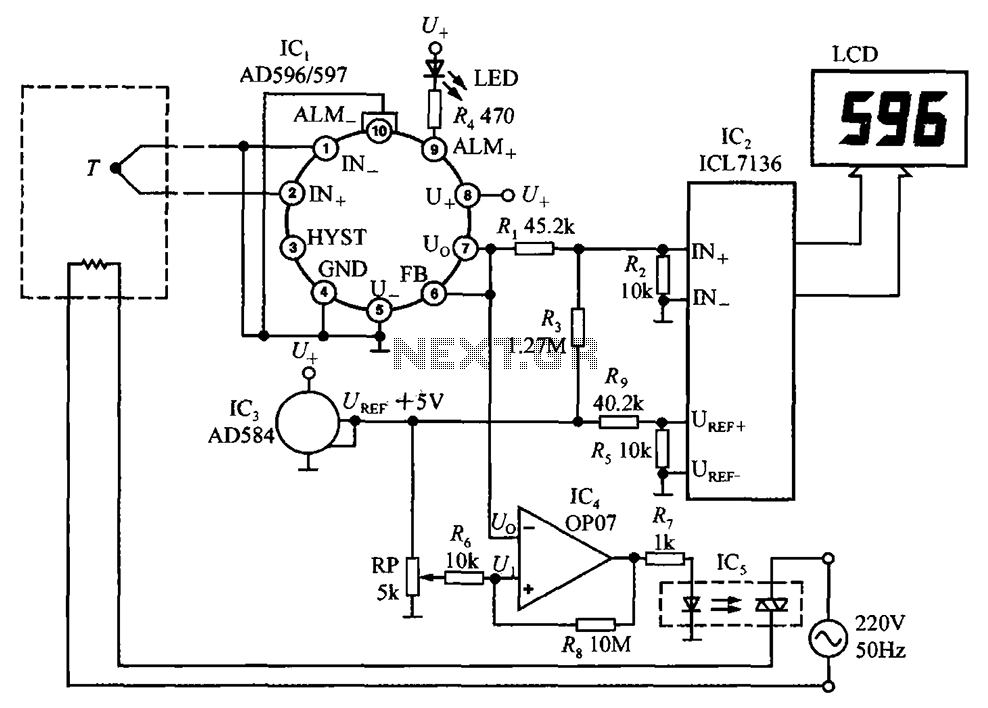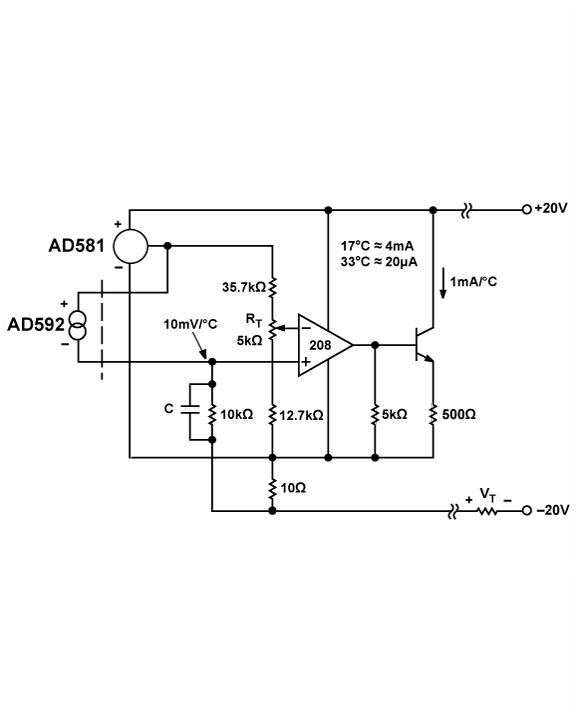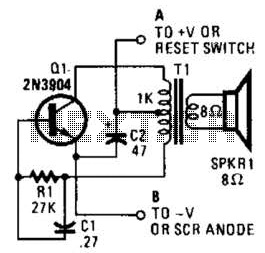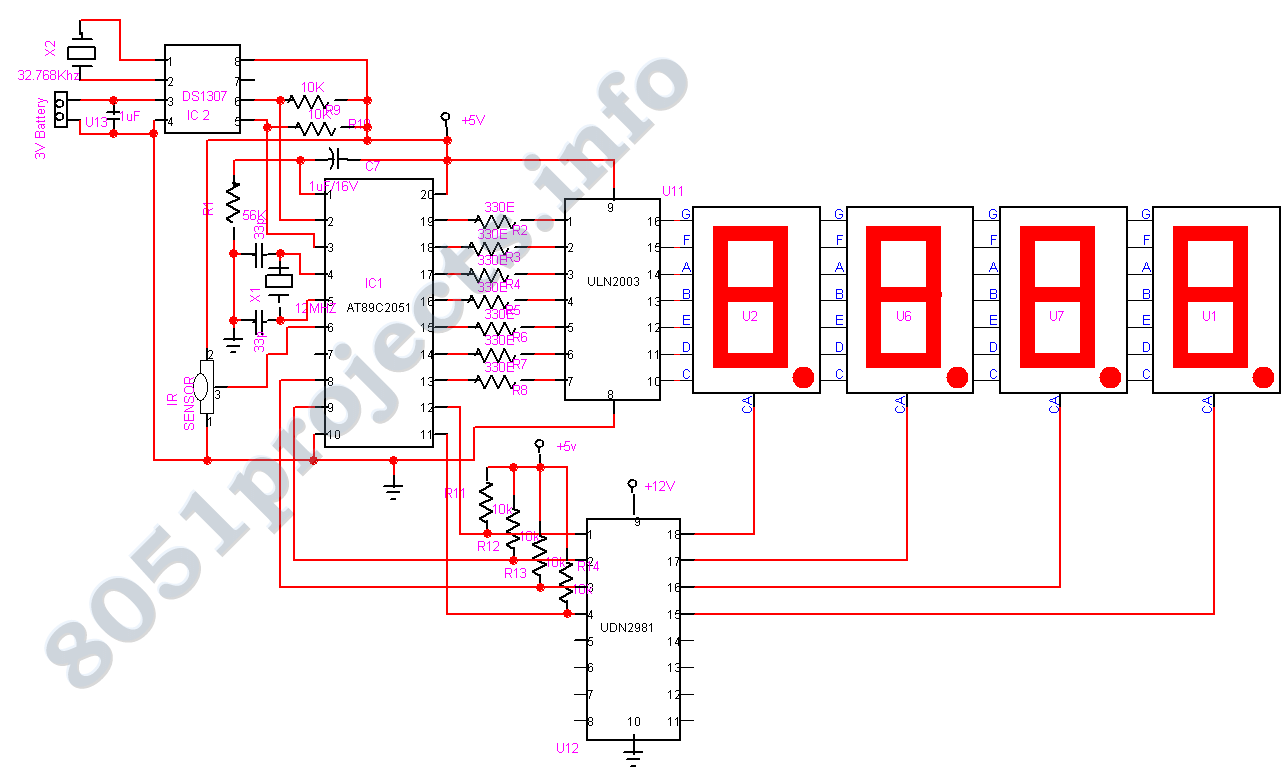
Digital pulse width measurement circuit diagram CD4518 and CD4069 the
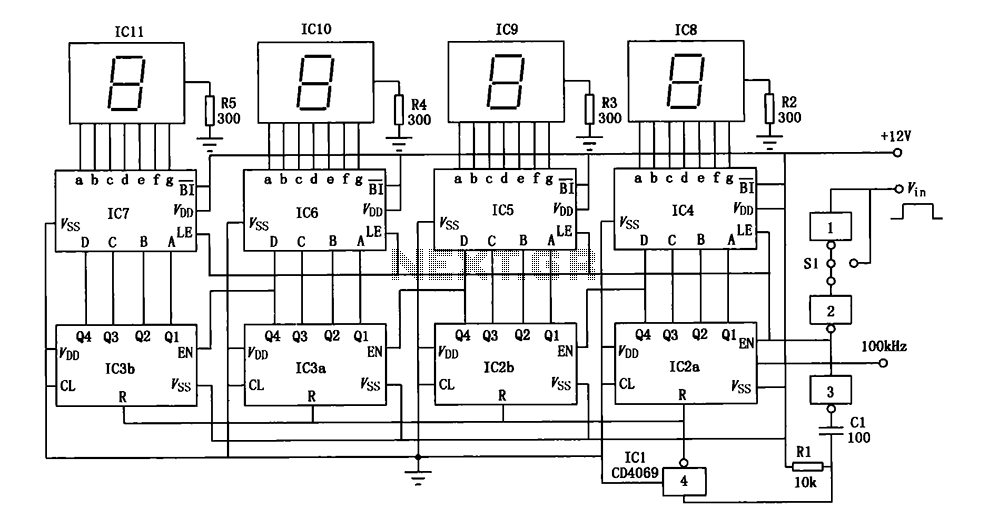
A digital pulse width measurement circuit is presented. It operates with a 100 kHz reference frequency to count the pulse width of the input signal. The count value represents the measured pulse width displayed on four seven-segment LED displays. The resolution of the circuit is 10 microseconds, with a maximum measurable pulse width of 99.99 milliseconds. The circuit utilizes a dual BCD adder counter, IC2 and IC3, which is the CD4518 model. Additionally, IC4 through IC7 serve as BCD latch/decoder/drivers, utilizing the CD4511 model.
The digital pulse width measurement circuit is designed to accurately determine the duration of input signal pulses. The circuit's operation begins with a 100 kHz clock signal that provides a stable timing reference. This clock signal is fed into the CD4518 dual BCD adder counter (IC2 and IC3), which counts the number of clock pulses corresponding to the width of the incoming pulse.
The resolution of the measurement is set at 10 microseconds, allowing for precise readings of pulse widths. The maximum pulse width that can be accurately measured is 99.99 milliseconds. When a pulse is detected, the counters increment based on the duration of the pulse, effectively translating the pulse width into a count value.
To display the measured pulse width, the circuit employs four seven-segment LED displays. The output from the CD4518 is fed into the CD4511 BCD latch/decoder/drivers (IC4 to IC7). These components convert the binary-coded decimal (BCD) output from the counter into a format suitable for driving the seven-segment displays, allowing for a clear visual representation of the measured pulse width.
In summary, this digital pulse width measurement circuit effectively combines precise counting and visual display components to measure and present pulse widths in a user-friendly manner. The integration of the CD4518 and CD4511 ICs ensures accurate counting and display, making it suitable for various applications in electronics where pulse width measurement is required.Digital pulse width measurement circuit is shown. It uses a l00kHz reference frequency, the count in the pulse width of the signal, the count value of the product of the resolu tion on behalf of the measured value of the pulse width by four seven-segment LED display. Resolution circuit is 10 s, the maximum width is measured 99.99ms. IC2, IC3 dual BCD adder counter CD4518; IC4 ~ IC7 to BCD seven latch/decoder/driver CD4511.
The digital pulse width measurement circuit is designed to accurately determine the duration of input signal pulses. The circuit's operation begins with a 100 kHz clock signal that provides a stable timing reference. This clock signal is fed into the CD4518 dual BCD adder counter (IC2 and IC3), which counts the number of clock pulses corresponding to the width of the incoming pulse.
The resolution of the measurement is set at 10 microseconds, allowing for precise readings of pulse widths. The maximum pulse width that can be accurately measured is 99.99 milliseconds. When a pulse is detected, the counters increment based on the duration of the pulse, effectively translating the pulse width into a count value.
To display the measured pulse width, the circuit employs four seven-segment LED displays. The output from the CD4518 is fed into the CD4511 BCD latch/decoder/drivers (IC4 to IC7). These components convert the binary-coded decimal (BCD) output from the counter into a format suitable for driving the seven-segment displays, allowing for a clear visual representation of the measured pulse width.
In summary, this digital pulse width measurement circuit effectively combines precise counting and visual display components to measure and present pulse widths in a user-friendly manner. The integration of the CD4518 and CD4511 ICs ensures accurate counting and display, making it suitable for various applications in electronics where pulse width measurement is required.Digital pulse width measurement circuit is shown. It uses a l00kHz reference frequency, the count in the pulse width of the signal, the count value of the product of the resolu tion on behalf of the measured value of the pulse width by four seven-segment LED display. Resolution circuit is 10 s, the maximum width is measured 99.99ms. IC2, IC3 dual BCD adder counter CD4518; IC4 ~ IC7 to BCD seven latch/decoder/driver CD4511.
